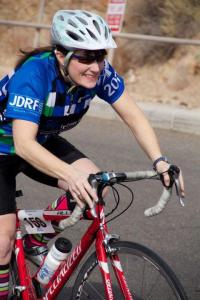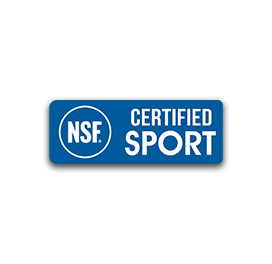Diabetics Are Athletes Too! How Does This Dietitian Help With Their Nutrition?
 When Sally Hara was pursuing a nutrition science education some 30 years ago, she transferred from Montana State – where the options were Home Economics, Botany, Zoology, and Chemistry – to the UC, Davis, where she earned undergraduate degrees in Nutrition Science and Exercise Physiology, then a master’s degree in Nutrition Science. That left her with a knowledge base of Physiology and Biochemistry that could rival that of many medical students, and a habit of thinking in terms of Metabolic Pathways and Endocrine pathways.
When Sally Hara was pursuing a nutrition science education some 30 years ago, she transferred from Montana State – where the options were Home Economics, Botany, Zoology, and Chemistry – to the UC, Davis, where she earned undergraduate degrees in Nutrition Science and Exercise Physiology, then a master’s degree in Nutrition Science. That left her with a knowledge base of Physiology and Biochemistry that could rival that of many medical students, and a habit of thinking in terms of Metabolic Pathways and Endocrine pathways.
After she moved to Seattle, Hara completed a dietetic internship at the University of Washington, then proceeded to become a Certified Diabetes Educator (CDE) and Board Certified Specialist in Sports Dietetics (CSSD), a combination that makes her a leading consultant for athletes with diabetes and the professionals who work with them. “Most Sports Dietitians don’t know what to do with diabetics and most diabetes educators don’t know what to do with athletes,” she says. She owns a private practice, ProActiveNutrition.net, and is an experienced public speaker.
About six years ago, Hara participated in a Juvenile Diabetes Research (JDRF) workshop, “Triabetes”, for Type 1 triathletes. About forty Type 1 athletes came, and subsequently the Sports and Diabetes Group Northwest was formed, which has grown to over 80 active members. She also started riding with the JDRF cycling group “They’re my colleagues, they’re my friends, they’re who I train with,” she says. says. “I learn as much from them as they do from me – probably more. These are people who are doing what they love in spite of diabetes and figuring out how to do it.”
Hara helps them figure it out. “If I’m working with a Type 1 athlete, I put on my Sports Dietitian hat first – ‘what do you need to improve your performance?’” she explains. “Then I put on my Diabetes Educator hat and say ‘how do we need to adjust your insulin to cover this diet and your training?’ I have to be more careful with the timing of carbohydrates, but the need is the same as for any other athlete. The blood sugar response to exercise differs for each athlete and each sport, so nutrition strategies must be individualized.
Although the cool Northwest temperatures leave athletes sweating less, Hara takes The Right Stuff to cycling events in hotter climates such as Arizona and packs the product in her bike bag for emergencies any time. She also promotes it with ride coaches.
This is your magic bullet,” she says. “If people start cramping, it can rescue them. It’s so successful. It’s really easy to carry with me.
“This is your magic bullet,” she says. “If people start cramping, it can rescue them. It’s so successful. It’s really easy to carry with me. Usually when I see athletes cramping and when I cramp myself it is after some kind of exertion, either sprints or some kind of hard push where you’ve been engaging those muscles and they are fatigued. I take a bottle of water and put The Right Stuff in it and have them drink it down. It resolves it.”






